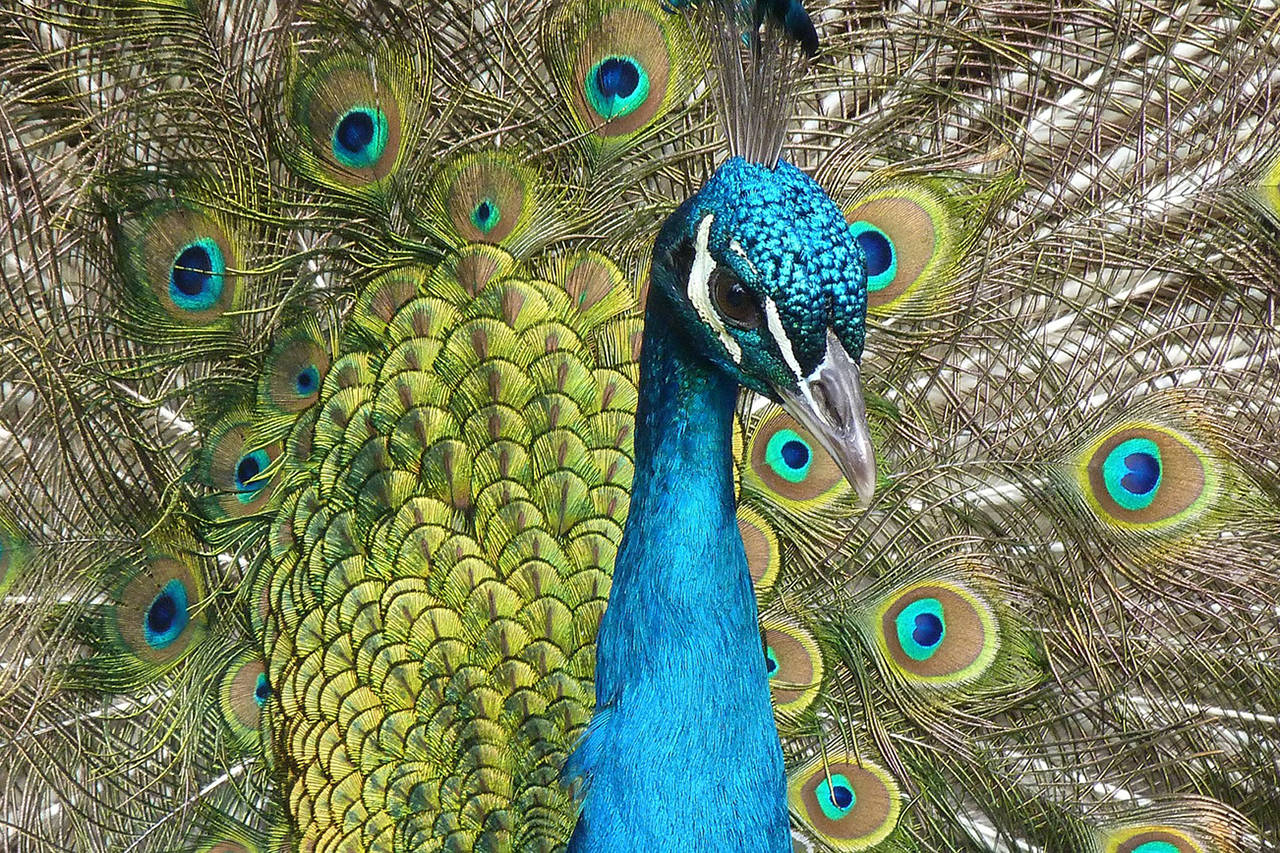AUSTIN, Texas — Inside a chain-link-wrapped enclosure on the campus of Texas A&M University, one of the world’s foremost peacock experts has strapped cameras onto the heads of the birds and arrived at a surprising answer to a question that has puzzled scientists since Charles Darwin’s day: What, exactly, is the point of that spectacular plumage?
The conventional wisdom is that the 6-foot-high collection of tail feathers evolved to attract the attention of the lady birds. But researchers have questioned why a feature that outlandish won out over other, less cumbersome adaptations that could serve the same basic purpose.
After looking through the eyes of the birds, Jessica Yorzinski found evidence suggesting that the popular theory overstates the importance of the peacocks’ most famous attribute. Turns out that when sizing up potential mates, peahens do not look up at that marvelous train.
“They’re not really even looking at it,” Yorzinski said. “It was a little bit puzzling.”
Yorzinski has gathered the peacocks and peahens in a setting that, during mating season, resembles a sort of bird version of spring break on South Padre Island. In the early portion of the season, the males will jostle for the best spaces in the enclosure to catch a peahen’s attention.
The flock consists of feral peacocks and peahens captured in Florida and California. Yorzinski saidshe decided to study those birds in part because they are large enough to carry the weight of the head cameras she wanted to use in her research. They wear the cameras for perhaps an hour at a time and have become so accustomed to the cameras they will even copulate while wearing them.
As the peacocks are establishing their social hierarchy, they will often preen, sometimes strutting by the peahens, feathers on full display. More often, however, it is the peahens who will wander by the peacocks and — should one catch their eye — take the initiative.
But what catches their eye is not what Yorzinski expected.
The peahens tend to keep their eyes at eye level or lower, on the lower edge of the peacock’s plume. Those feathers are still colorful — but they are certainly not the full display.
This bit of behavior speaks to questions Darwin raised about the feathers. The peacock so befuddled him that he amendedhis general theories about adaptation by concluding peacocks drag around the bulky train not so much for an individuals’ survival, but to help with sex — with passing along genes, rather than seeing nature unapologetically eliminate them.
Yorzinski’s latest research focused on what the males are looking at during mating season. Recent footage, which formed the basis for a paper published March 15 in the academic publication Journal of Experimental Biology, showed that peacocks, like peahens, tend not to look above eye level when sizing up rivals. They may be focusing on the lower edge of rivals’ plumage. Or — like single guys with a bit too much testosterone — they may be simply judging how much bigger another peacock is, and whether a fight is worthwhile.
“Both the males and females were looking at the bottom of the train,” Yorzinski said. “I certainly didn’t expect the attention to be directed at the lower portion of the display.”
So what are those towering, colorful feathers good for?
A likely explanation for Yorzinski’s findings is that the full display does give peahens a clue about the worthiness of a potential mate, but the hens also can focus on the least-spectacular portion because it can be a proxy of sorts for the whole package, Yorzinski said.



